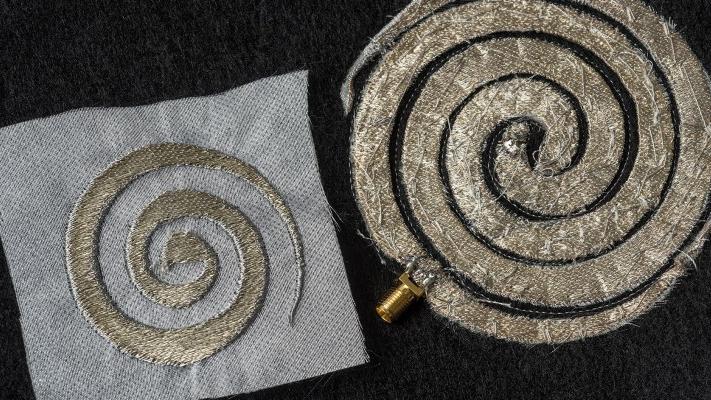materialscience
Latest

Hitting the Books: The Second Kind of Impossible
Welcome, dear readers, to Engadget's new series, Hitting the Books. With less than one in five Americans reading just for fun these days, we've done the hard work for you by scouring the internet for the most interesting, thought provoking books on science and technology we can find and delivering an easily digestible nugget of their stories.

Stitch circuitry into your shirt for a better cell signal
Wearables are getting slimmer, but they're still oblong lumps worn over normal outfits. That's not enough for some tinkerers who are trying to make clothes themselves part of the computing (see: Drum Pants). Now, Ohio State University researchers are stitching conductive threads into clothing with precision that rivals printed circuit boards.

Predator drones could soon hide under dielectric 'invisibility cloaks'
America's fleet of Predator UAVs could soon become even harder to shoot down (or even detect for that matter) thanks to a new kind of camouflage developed at UC San Diego. UCSD professor Boubacar Kante and his team published their findings last month in the journal Progress In Electromagnetics Research and will submit a separate report to the Department of Defense later this month, according to reports from the Army Times. The material, dubbed the "dielectric metasurface cloak," builds on earlier work from Duke University in 2006. It's essentially a thin layer of Teflon studded with ceramic particles and capable of modulating wavelengths of energy along the electromagnetic scale (including both visible light and radar).

Researchers create 'rubber-band electronics' material, capable of stretching up to 200 percent (video)
One of the major issues with embedded medical devices is the lack of flexibility in existing electronics. Fortunately, researchers at the McCormick School of Engineering at Northwestern University have developed a new material that can create electronic components capable of stretching to 200 percent of their original size. One of the major obstacles was how stretchable electronics with solid metal parts suffered substantial drops in conductivity but this solution involves a pliable three-dimensional structure made from polymers with 'pores'. These are then filled with liquid metal which can adjust to substantial size and shape changes, all while maintaining strong conductivity. We've embedded a very brief video of the new stretchable material going up against existing solutions -- it's right after the break.


